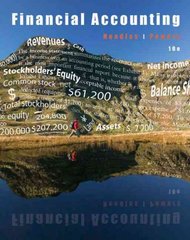
16 3-49 Choice of Cost Driver Study Appendix 3. Richard Ellis, the director of cost operations of American Micro Devices, wishes to develop an accurate cost function to explain and predict support costs in the company's printed circuit board assembly operation. Mr. Ellis is concerned that the cost function that he currently uses based on direct labor costs is not accurate enough for proper planning and control of support costs. Mr. Ellis directed one of his financial analysts to obtain a random sample of 25 weeks of support costs and three possible cost drivers in the circuit-board assembly department: direct labor hours, number of boards assembled, and average cycle time of boards assembled. (Average cycle time is the average time between start and certified completion after quality testing-of boards assembled during a week.) Much of the effort in this assembly operation is devoted to testing for quality and reworking defective boards, all of which increase the average cycle time in any period. Therefore, Mr. Ellis believes that average eyele time will be the best support-cost driver. Mr. Ellis wants his analyst to use regression analysis to demonstrate which cost driver best explains support costs. Circuit Board Assembly Direct Labor Direct Labor Number of Boards Average Cycle Week Support Costs, Y Hours, X Completed, X Time (Hours). X, 566,402 7.619 2.983 186.44 56,043 7,678 139.14 2.30 60,337 7.810 2,413 151.13 SO00 7.659 2.221 64,241 7.646 2,701 158.63 60.846 7.765 2.656 148,71 7 43,119 7.685 2.495 105.85 63.412 7.962 2.128 174.02 9 59.23 7.793 2.127 155. 10 60,070 7.732 2.127 11 53.145 7.771 2338 142.97 12 65.0127 7.842 2.685 176.0 13 58.220 7.940 2.602 150.19 14 65.406 7.750 2,029 35.26% 194.06 15 7.954 2.136 100.51 16 46,394 7.768 2.046 137.47 17 71.877 7.764 2.786 197.44 18 61,903 7.635 2.822 164.00 19 50.009 7,849 2.17% 20 49,327 7.860 2.244 123.37 21 44.703 7.576 2,195 128.25 45.582 7.557 2.370 106.16 23 43.818 7.569 2.016 131.41 24 62.122 7,672 2.515 154. 52.403 7.653 2.542 140.07 141.95 22 Instructions: 1- Determine the cost function using the High-low method for each cost driver (X1, X2, and X3) to prepare a prediction of the Assembly support cost. 2- Determine the cost function using the visual analysis method for cach cost driver to predict the assembly cost. You need to plot support costs (y) versus cach possible cost driver, X1, X2, and X3 using excel. 3. Use the regression analysis method to measure cost function using each of the cost driver. Which is the best cost driver for support cost? 4- Which prediction method you prefer? Why? 16 3-49 Choice of Cost Driver Study Appendix 3. Richard Ellis, the director of cost operations of American Micro Devices, wishes to develop an accurate cost function to explain and predict support costs in the company's printed circuit board assembly operation. Mr. Ellis is concerned that the cost function that he currently uses based on direct labor costs is not accurate enough for proper planning and control of support costs. Mr. Ellis directed one of his financial analysts to obtain a random sample of 25 weeks of support costs and three possible cost drivers in the circuit-board assembly department: direct labor hours, number of boards assembled, and average cycle time of boards assembled. (Average cycle time is the average time between start and certified completion after quality testing-of boards assembled during a week.) Much of the effort in this assembly operation is devoted to testing for quality and reworking defective boards, all of which increase the average cycle time in any period. Therefore, Mr. Ellis believes that average eyele time will be the best support-cost driver. Mr. Ellis wants his analyst to use regression analysis to demonstrate which cost driver best explains support costs. Circuit Board Assembly Direct Labor Direct Labor Number of Boards Average Cycle Week Support Costs, Y Hours, X Completed, X Time (Hours). X, 566,402 7.619 2.983 186.44 56,043 7,678 139.14 2.30 60,337 7.810 2,413 151.13 SO00 7.659 2.221 64,241 7.646 2,701 158.63 60.846 7.765 2.656 148,71 7 43,119 7.685 2.495 105.85 63.412 7.962 2.128 174.02 9 59.23 7.793 2.127 155. 10 60,070 7.732 2.127 11 53.145 7.771 2338 142.97 12 65.0127 7.842 2.685 176.0 13 58.220 7.940 2.602 150.19 14 65.406 7.750 2,029 35.26% 194.06 15 7.954 2.136 100.51 16 46,394 7.768 2.046 137.47 17 71.877 7.764 2.786 197.44 18 61,903 7.635 2.822 164.00 19 50.009 7,849 2.17% 20 49,327 7.860 2.244 123.37 21 44.703 7.576 2,195 128.25 45.582 7.557 2.370 106.16 23 43.818 7.569 2.016 131.41 24 62.122 7,672 2.515 154. 52.403 7.653 2.542 140.07 141.95 22 Instructions: 1- Determine the cost function using the High-low method for each cost driver (X1, X2, and X3) to prepare a prediction of the Assembly support cost. 2- Determine the cost function using the visual analysis method for cach cost driver to predict the assembly cost. You need to plot support costs (y) versus cach possible cost driver, X1, X2, and X3 using excel. 3. Use the regression analysis method to measure cost function using each of the cost driver. Which is the best cost driver for support cost? 4- Which prediction method you prefer? Why







